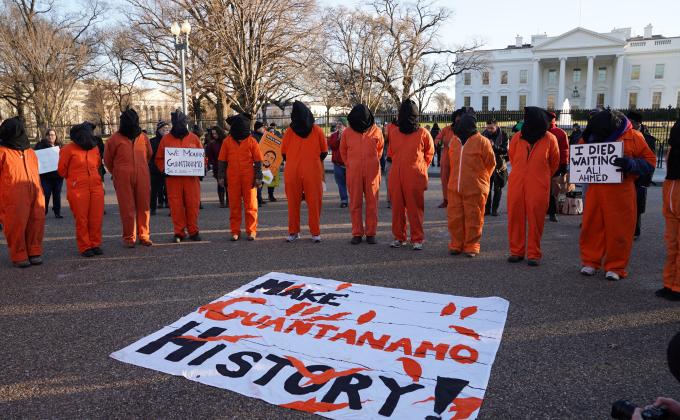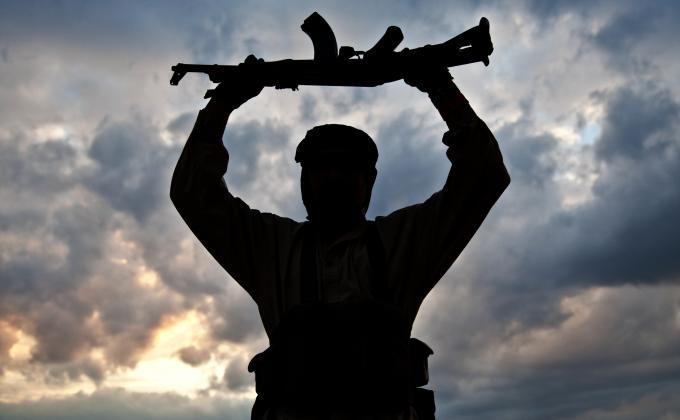Between 2012 and 2019, a significant number of foreigners travelled to Syria and Iraq, many to join ISIS and live under what came to be the so-called caliphate. Their backgrounds and journeys are as diverse as their nationalities. One such individual was Amanda, a 23-year-old Swedish woman. She converted to Islam in her teenage years, became radicalised, married a man who became known as the most notorious Swedish terrorist, and travelled to Syria with their four children, all under the age of four, to live under ISIS’s rule. In Syria, she gave birth to three more children.
Much of the information about childhood in the so-called caliphate derives from ISIS’s own propaganda, which sheds light on the group’s unprecedented exploitation of children as soldiers, martyrs, and executors. When it comes to the foreign fighters, many travelled to Syria and Iraq without children but became parents during their time with ISIS. Consequently, most of the children of foreign fighters were born there and thus very young during their time in ISIS-held territory and never trained in combat or were directly involved in acts of violence. However, the lives of the youngest children of ISIS fighters were far from safe.
Amanda’s seven young children survived bombardments and indescribable violence, including the airstrike that killed Amanda, and the shooting that killed their father. In their short life, the children were displaced multiple times, including to Baghouz, known as the last stronghold of ISIS. As with the many family members of ISIS fighters, when the so-called caliphate fell, the seven orphans were brought to the makeshift detention camp al-Hol. They were ultimately rescued by their grandfather, and successfully returned to Sweden where they have been reintegrating well.
The case of Amanda’s seven orphaned children highlights the urgent need for international action regarding the children remaining in Northeast Syrian detention camps, emphasising both their precarious situation and potential for recovery if evacuated and given a new chance in life. This analysis uses the example of these children to demonstrate the possibility for successful repatriation and reintegration of children remaining in Northeast Syria, and challenges perceptions that these children should be viewed as imminent ‘ticking time bombs’. It is based on the author’s direct experience in this repatriation process and continued engagement with this work, including with the family.
The Rescue Operation of the Seven Orphans
In May 2019, Amanda’s orphaned children were rescued from Syria. Patricio Galvéz, their grandfather, had long endeavoured to persuade his daughter to leave Syria and return to Sweden, but her commitment to the Islamic State hindered his efforts. Following her death, Patricio dedicated himself to rescuing her seven children. Initially receiving no assistance from Swedish authorities, he embarked on a solo journey to Syria to find his grandchildren – a courageous effort documented by director Gorki Glaser-Müller in Children of the Enemy. Miraculously, Patricio found all seven children still alive. Patricio’s persistence paid off when the Swedish government after some forty days finally provided the necessary guarantees for the children to leave the al-Hol camp and come home. Volunteers, including the author of this article, supported Patricio throughout his campaign, caring for the children upon their release and accompanying them on their journey back from Syria to Sweden.
From Trauma to Triumph: The Resilient Journey of Repatriated Children
The rehabilitation and reintegration process for the seven orphans in Sweden showcases the potential for recovery and resilience among repatriated children. At the time of their repatriation, the children were between the ages of one and eight years. They showed signs of having experienced significant trauma, were malnourished, and in need of immediate care. Five years later, the seven orphans are thriving. They are healthy, happy, and integrated into their new environment. Although there can be challenges, they have bounced back in a remarkable way, demonstrating how effective comprehensive support measures can be in counteracting early childhood adversities. The first step was to get the children out of the war and high-risk environment in Syria. Once back in Sweden, central to the rehabilitation process has been establishing stability for these children with a caring approach, ensuring they are safe, secure, and have their complex needs met.
Child returnees are facing multiple challenges upon their arrival. Especially those born in Syria or taken there as infants, they are exposed to an entirely unknown living environment, introduced to new caretakers and to (in many cases, frequently changing) social workers. While many children have to cope with the separation from their mothers upon return, the orphaned children are continuously confronted with the challenge of processing the death of their parents.
With the seven orphans, their grandfather Patricio, along with other extended family members and the foster families where the children are placed, plays a crucial role in providing the stable foundation. Additionally, key elements included enrolling the children in school with educational support to help them integrate smoothly, offering psychological counselling, and facilitating changes to their names for privacy and protection. Hobbies, friendships, and personal interests seem to constitute resilience factors that help children overcome the challenges they face. One child enjoys singing and composing songs, another delights in playing with the family puppy, and a third finds joy in reading and participating in a children's book club. Reflecting on their progress, Patricio remarked, “It’s as if the children are catching up on everything they missed. They’ve been given a new chance in life, and they’re embracing it wholeheartedly.”
The success story of these seven siblings is not unique – other repatriated children have shown similar resilience with proper support. Repatriated children’s recovery and long-term development seems to depend a lot on their experiences upon return to their countries of origin. Most other repatriated Swedish children have returned together with their mothers. The women that I have worked with have appeared to distance themselves from ISIS and their violent ideology, and want to create conditions for children to grow up in good and safe environments.
The role of mothers in shaping these children’s experience and exposure to adversities is complex. Some of these children were taken to ISIS by their parents, and those born in the war zone were exposed to different levels of adversities within their family environments. At the same time, it is important to acknowledge that notions of motherhood go beyond women’s affiliation with ISIS. In many cases, it has become clear that mothers can constitute important protective factors for their children, and that many have demonstrated high caring abilities under extremely hostile and dire conditions. Women’s roles and status in ISIS territory varied considerably. Although some women travelled to Syria to join the terrorist organisation deliberately, militant women appear to have constituted only a small fraction. Many joined ISIS due to misapprehension, circumstance, or coercion. An analysis of cases of positive reintegration outcomes after repatriations suggests the important role the mothers played in not only protecting their children from threats during their time in the war and later in the detention camps, but despite the hard circumstances, have also created possibilities for their children to develop during their time in Syria. A consequence of that is that children may return bearing not only experiences of potentially traumatic events but also a repertoire of skills and experiences that can be perceived as valuable resources in their lives.
Upon their arrival to Sweden, a child’s chance to live in safety and dignity with their mothers (in case the mother does not pose a true risk to the child), to be able to begin school and get to know friends among classmates, to have access to nutritious food and activities can be viewed as elements for the well-being of the child. This, along with the support from family and other key persons in the children’s life, as well as professionals, provides the children and their mothers protection and a stable foundation for recovery and reintegration.
The Ongoing Crisis in The Detention Camps: An Unsustainable Security Situation
In stark contrast, many children still remain in the detention camps al-Hol and Roj in Northeast Syria, sharing similar traumatic experiences as the seven orphans of war, violence, displacement, and the separation and death of parents and siblings. Despite the dire situation of these children being well known to the international community, calls for their repatriation were initially met with high levels of reluctance and drowned out by concerns that these children and their mothers pose a danger to their home countries.
Since 2019, several foreign nations have followed Sweden in repatriating their citizens. Recently, the US, the Netherlands, Canada, and Finland brought home 22 individuals. The Kurdish-led self-administration overseeing these camps and the neighbouring Iraqi government continue to urge governments to repatriate their citizens due to legitimate security concerns over a resurgence of ISIS and its effect on the already fragile region. US Secretary of State Anthony Blinken recently called for all governments to take responsibility, asserting that “the only durable solution to the humanitarian and security crisis in these detention facilities in Northeast Syria is for countries to repatriate, rehabilitate, reintegrate, and where appropriate, ensure accountability for wrongdoing.”
Even though at least 38 countries have now repatriated some or many of their citizens, approximately 44,700 children and women remain detained in the makeshift camps al-Hol and Roj in Northeast Syria. While the majority are of Syrian and Iraqi nationality, a total of 8,500 women and children are third-country nationals from approximately 60 countries. It is a major international scandal that member states of the Global Coalition against ISIS and members of NATO shirk their responsibility to mitigate the dual security threat posed to the remaining children in these camps, and to the global community as a result of leaving families in this high-threat environment where they remain vulnerable to death, radicalisation, and recruitment by ISIS. Moreover, it is a betrayal to all the victims of ISIS that many countries continue to reject their responsibility to ensure legal justice, redress, and protection.
Five years after the rescue operation of the seven orphans, the situation in the camps remains grim. While not all adult camp detainees have been ISIS sympathisers (some are in fact the victims of terrorism that are being kept in the same camps as their perpetrators), these camps are characterised as breeding grounds for a new generation of ISIS. The catastrophic conditions in al-Hol and Roj camp have been frequently pointed out by human rights organisations and independent human rights experts. The camps are reported to be plagued by daily insecurity, with violent incidents including murder, assault, intimidation, and sexual abuse happening regularly. These camps are also targets for ISIS sleeper cells. It is reported that ISIS continues to carry out attacks and smuggles individuals out of the camps to replenish its ranks. There are no acknowledged investigations or preventive measures in place, leading to a persistent atmosphere of fear and intense anxiety, particularly affecting women and children.
From a distance, they resemble refugee camps, but a closer look as observed by multiple visits to these camps reveals the visual indicators of an open-air prison: militarised areas with high fences, barbed wires, and watchtowers with armed soldiers. Children lack access to health care, education, and security. Their traumas remain unaddressed, and the accumulation of toxic stress in the face of basic survival continues to erode their well-being. Grievances, trauma, and deprivation are fertile grounds for extremism to flourish, especially in a community where ISIS members continue to reinforce their ideology and customs. While some children in the camps have mothers who are violent extremism offenders, others are not. Yet, there are few children across the world who are at a higher risk of terrorist exploitation and grooming than those who remain imprisoned in Northeast Syria, rejected by their home countries, and deprived of their rights and of any meaningful exposure to democratic values, education, and hope. The international community appears to be deliberately allowing the formation of a new generation of ISIS.
Balancing Humanitarian Principles, Justice and Security: The Need for Repatriation of all ISIS-Affiliated Third Country Nationals
When it comes to third-country nationals, many of the countries only have a relatively small, manageable number of families in need of repatriation. However, the total number of the ISIS-affiliated population of foreigners poses a significant security risk if they remain in Northeast Syria. The Democratic Autonomous Administration of North And East Syria, which has repeatedly appealed to not be left alone with this burden, lacks the capacity to effectively manage the camps and put in place a justice system. Furthermore, concerns arise when a non-state actor imposes justice systems. The lack of recognition and support from the international community diminishes prospects for legal justice in Northeast Syria that allows for a rule-of-law-based prosecution of adults who committed crimes, the disengagement of those who lived under ISIS for many years, and the rehabilitation when needed, including for children who are victims of terrorism. This can only occur if the third-country nationals – children, women, and men – are repatriated to their countries of origin.
Some governments have offered their female citizens the opportunity to return home with their children, but there are examples of mothers of different countries who have declined these offers. This refusal may be due to fears that their children would be separated from them upon returning to their countries of origin. However, in what other context would suspects be allowed to decide whether they want to be prosecuted and convicted? This is neither a sustainable foreign policy nor a demonstration of due process.
From the perspective of the children, there are many in the Roj and al-Hol camps who have seen their friends of the same nationality being evacuated while they remain behind because their mothers did not consent to repatriation. Should this be a matter of choice? To uphold humanitarian principles, sustainable foreign policy and global security, and to demonstrate due process, governments need to take action to bring all their citizens home – children, women, and men alike.
The Need for Durable Solutions
Despite a universal reluctance to repatriate the children, many European countries have now brought back a significant number of their minors and provided them with multiple support measures. A systematic consideration of their long term development and of the impact of state-led and family-based interventions can play an important role in fostering confidence in those countries who continue to hesitate bringing their children home.
At least 38 countries have already brought back some or many of their citizens, proving that it is eminently possible. Thirty-five countries have not yet conducted any known repatriation operations. What is needed is the political will and acceptance of the government of the nationals to do so. The United States, as the leader of the Global Coalition Against ISIS and as the biggest member state in NATO has reiterated its commitment to helping those nations which seek to repatriate their citizens from Northeast Syria and to finding solutions, including resettlement, for those who are unable to return to their communities or countries of origin.
The case of Amanda’s seven children highlights the potential for successful rehabilitation and reintegration of repatriated children. Their resilience and recovery demonstrate that with proper support, the adverse effects of early childhood trauma can be counteracted. It is imperative for the member states of the Global Coalition Against ISIS to take responsibility and act urgently to rescue the children still detained in Northeast Syria and contribute to solutions for all families affected. Leaving them behind not only endangers their lives but also poses a significant security risk to the region and the world. The international community must uphold human rights and provide these children with the opportunity for a hopeful future.
This article represents the views of the author(s) solely. ICCT is an independent foundation, and takes no institutional positions on matters of policy unless clearly stated otherwise.








